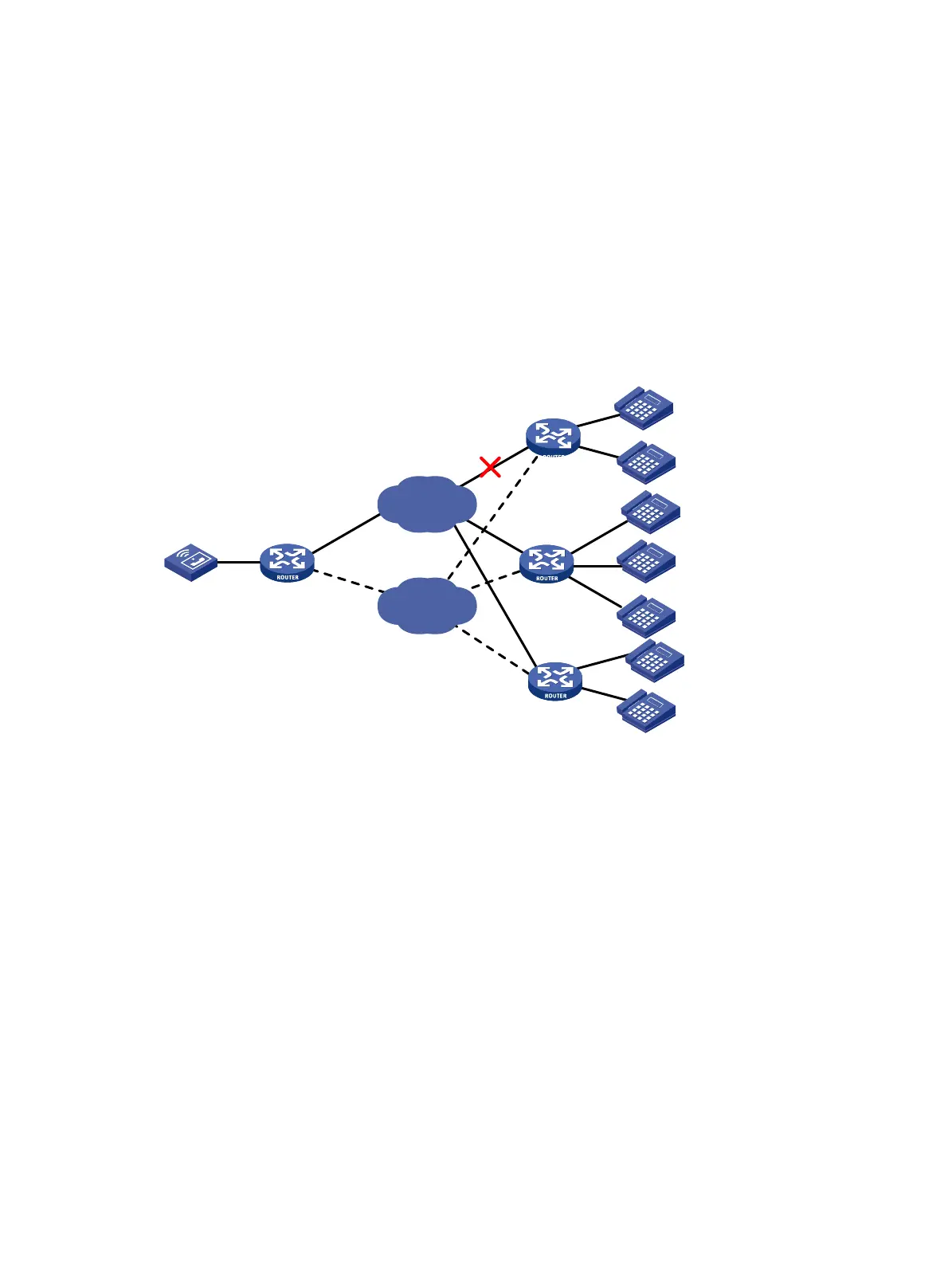367
Configuring SIP local survival
IP phones have been deployed throughout the headquarters and branches of many enterprises and
organizations. Typically, a voice server is deployed at the headquarters to control calls originated by
IP phones at branches.
The local survival feature enables the voice router at a branch to automatically detect the reachability
to the headquarter voice server, and process calls originated by attached IP phones when the
headquarters voice server is unreachable. The headquarters voice server will take over call services
from the branch voice router when the failure is removed.
Figure 752 sh
ows a typical
network diagram for the local survival feature.
Figure 752 Network diagram for the local survival feature
The following describes the local survival feature in detail:
1. When the WAN link from a branch to the headquarters is normal, all IP phones at the branch
are registered with the headquarters voice server and the headquarters voice server processes
calls originated by branch IP phones.
2. When the WAN link to the headquarters or the primary server fails:
The branch voice router can accept registrations from its attached IP phones.
The branch voice router ensures the normal call services between its IP phones, between
its IP phones and FXS interfaces, and between its FXS interfaces.
IP phone users at the branch can place or receive PSTN calls through FXS interfaces on the
voice router.
3. When the WAN link or the primary server recovers, the branch voice router rejects registrations
from IP phones and the headquarters voice server takes over call processing.
WAN
Server Headquarters
Branch B
PSTN
Branch A
Branch C

